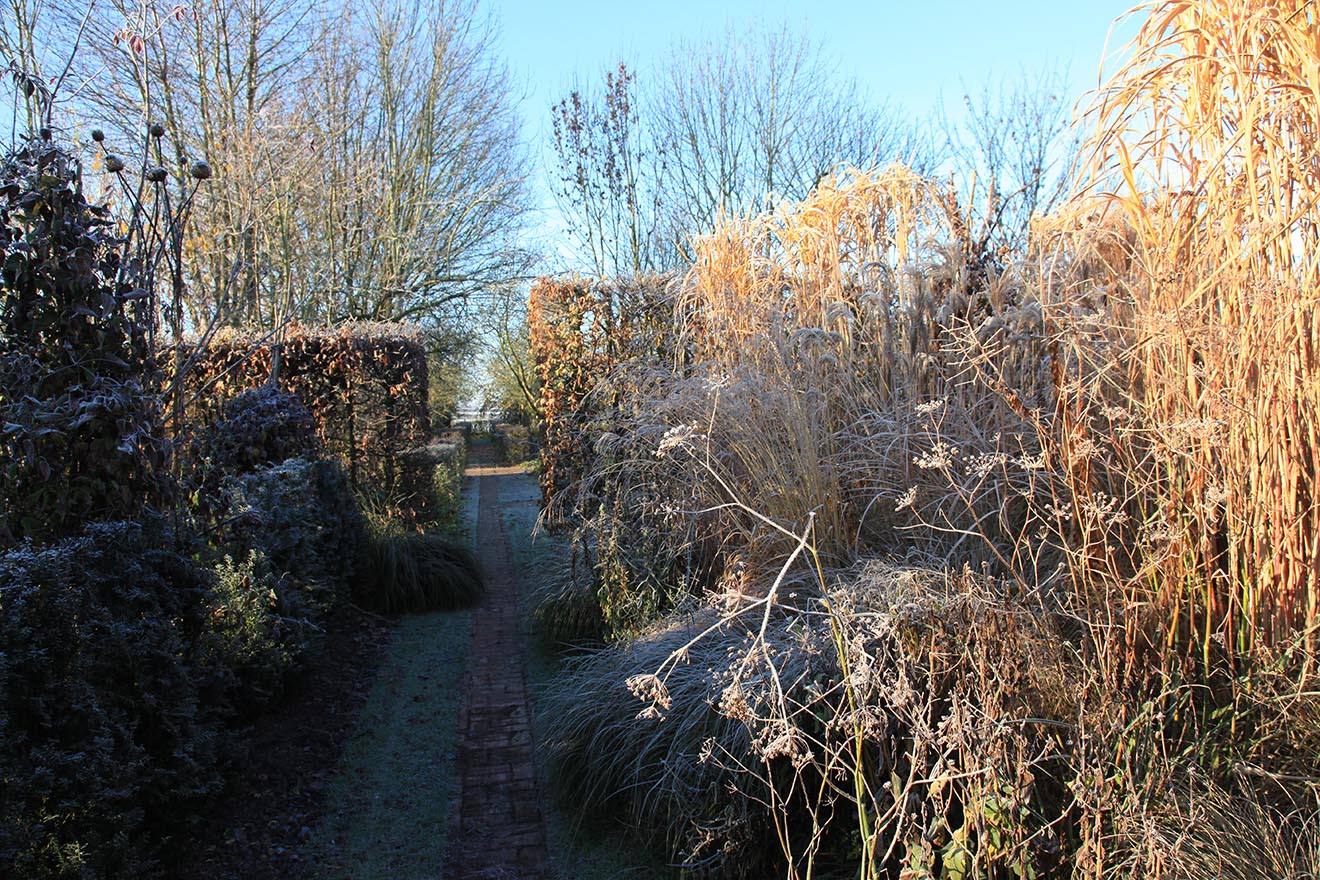
The November days draw in like a noose and the garden seems to slowly implode, losing all the things that gave it worth. The only answer to this is to tend it like an ailing friend, both to honour its better days and to prepare for the inevitable recovery in the New Year.
And there can be wonderful days, particularly at the beginning of the month, when the leaves are still holding on and glowing golden in the thin but clear light.
This, rather than October, is the month when the leaves reach their best autumnal colour, as well as when they really start to stream from the trees in earnest, although wet weather followed by a sharp frost – which November invariably brings – will send them not drifting in the breeze, but clattering down in the still air and hitting the ground like smashing crockery.
It is a good idea to leave as much winter cover as possible, which provides insulation and a microclimate to protect plants from the coldest weather, seedheads for birds, and is important cover for insects. Plants with dry, hollow stems such as asters, heleniums, rudbeckias and all grasses are especially good and should be left untouched until spring. But at least half of all summer’s growth can be removed, especially if it is wet and soggy and falling over the crowns of plants, as this can cause them to rot.
Start by cutting back anything that is not standing well without support. It is important not to snip timidly, but to make any cuts right at the base of the plants, removing the whole of the intended stem or leaf. This will let air in and help clear up and prevent fungal problems.

Any salad crops that have been growing through early autumn are liable to be nipped by the first frosts and will almost stop growing completely as the days get shorter and the light levels lower. However, simply by cloching them, I have found that their season can be extended almost into spring. I do not close the ends of the cloches but allow the air to go through for ventilation. This is especially important for chicory, which is very hardy, but hates the mixture of cold and wet, and will easily rot, forming a slimy, brown carapace over otherwise untouched leaves.
Dahlias will continue flowering until the first frosts. The top growth can be completely blackened by frost without the tubers being damaged. But the combination of wet and frozen ground is too much for them, so unless you have very good drainage or the winter temperatures rarely drop below –5˚C, then it is best to lift the tubers and store them.
Exquisite houses, the beauty of Nature, and how to get the most from your life, straight to your inbox.
Before putting them away for the winter months, the top growth should be cut back, leaving just 6in of stem. At this point, label them very clearly! Dahlias should have any damp soil removed and be left to dry upside down for a day or two for the hollow stems to drain. They should then be packed in crates or pots with sand, spent potting compost or even sawdust. This will insulate them and absorb excess moisture without their drying out completely.
Cannas are also too tender to leave out all winter and are best potted into leafmould or used potting compost, then watered and placed somewhere cool. Beneath a bench in a frost-free greenhouse works well. Water them lightly every few weeks so that they do not actively grow but never dry out.
It is a mistake to provide more than minimal heat to citrus plants during the winter months, with a range of 5˚C–15˚C being ideal. Although they should be watered very sparingly – once a month is adequate – the air should be damp and cool, so, in general, a conservatory or indoor room will be too dry, whereas a frost-free greenhouse or even a shed works very well.
Extracted from ‘Down to Earth' by Monty Don, published by Dorling Kindersley (£17.99)

